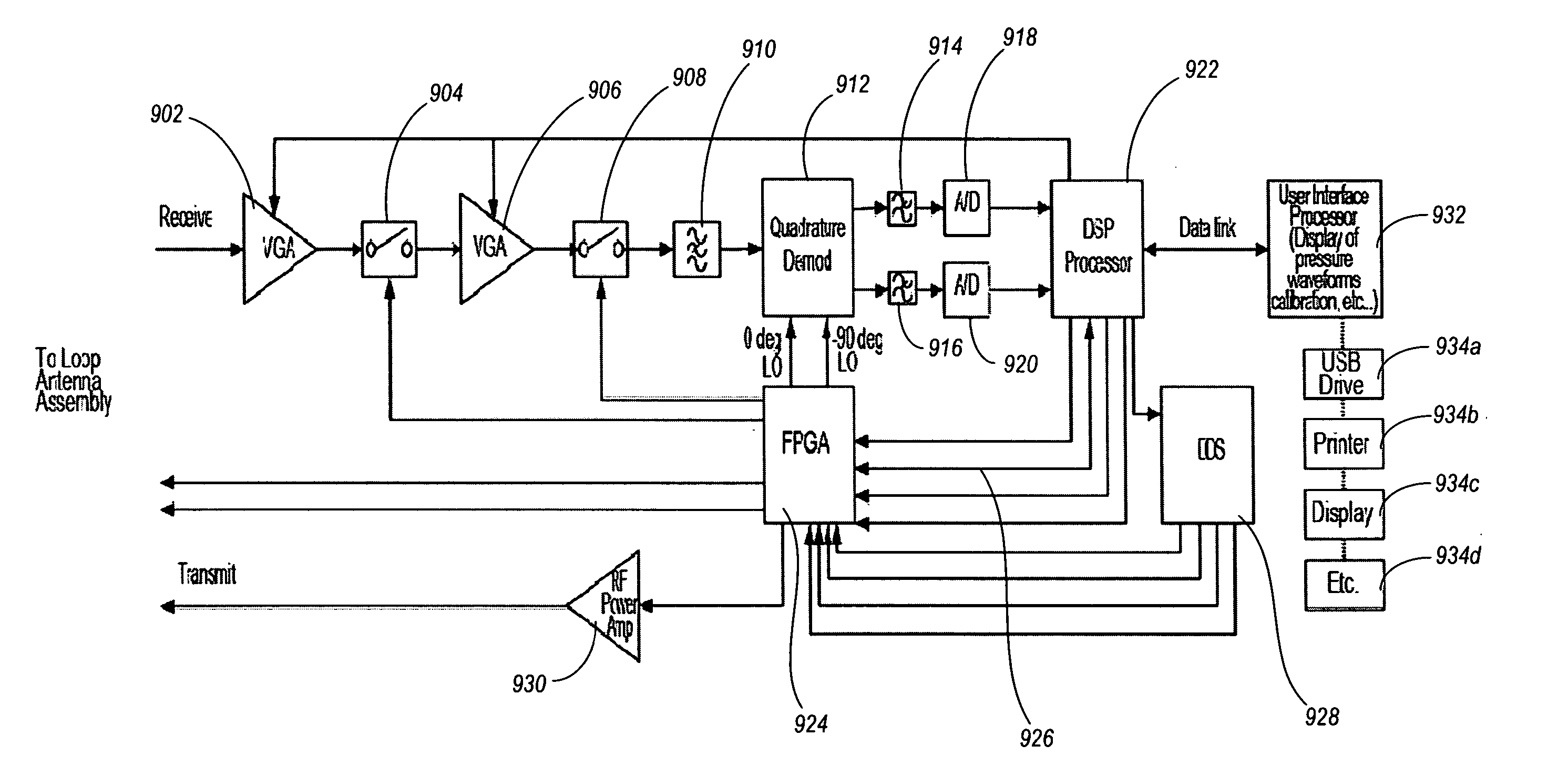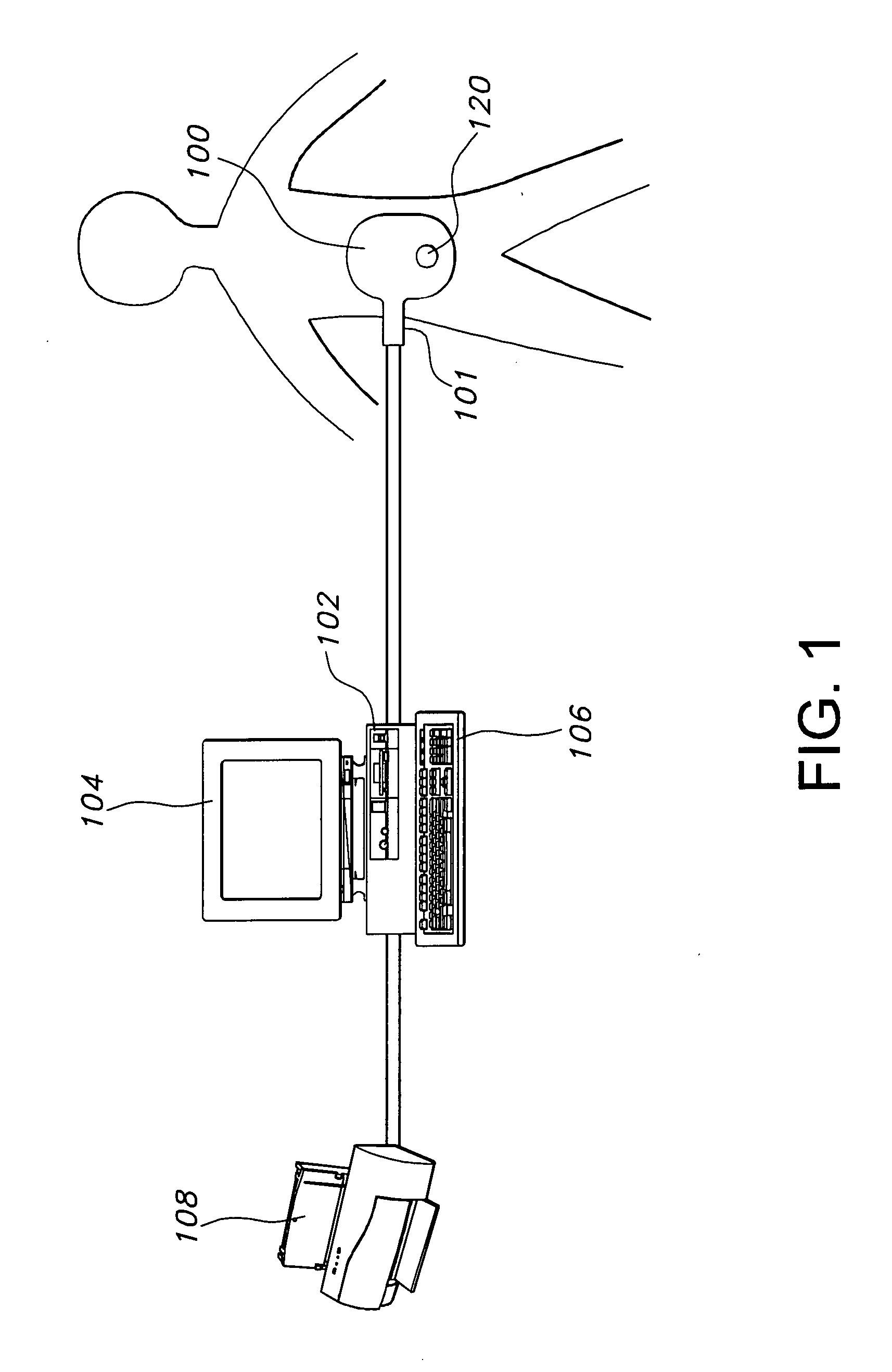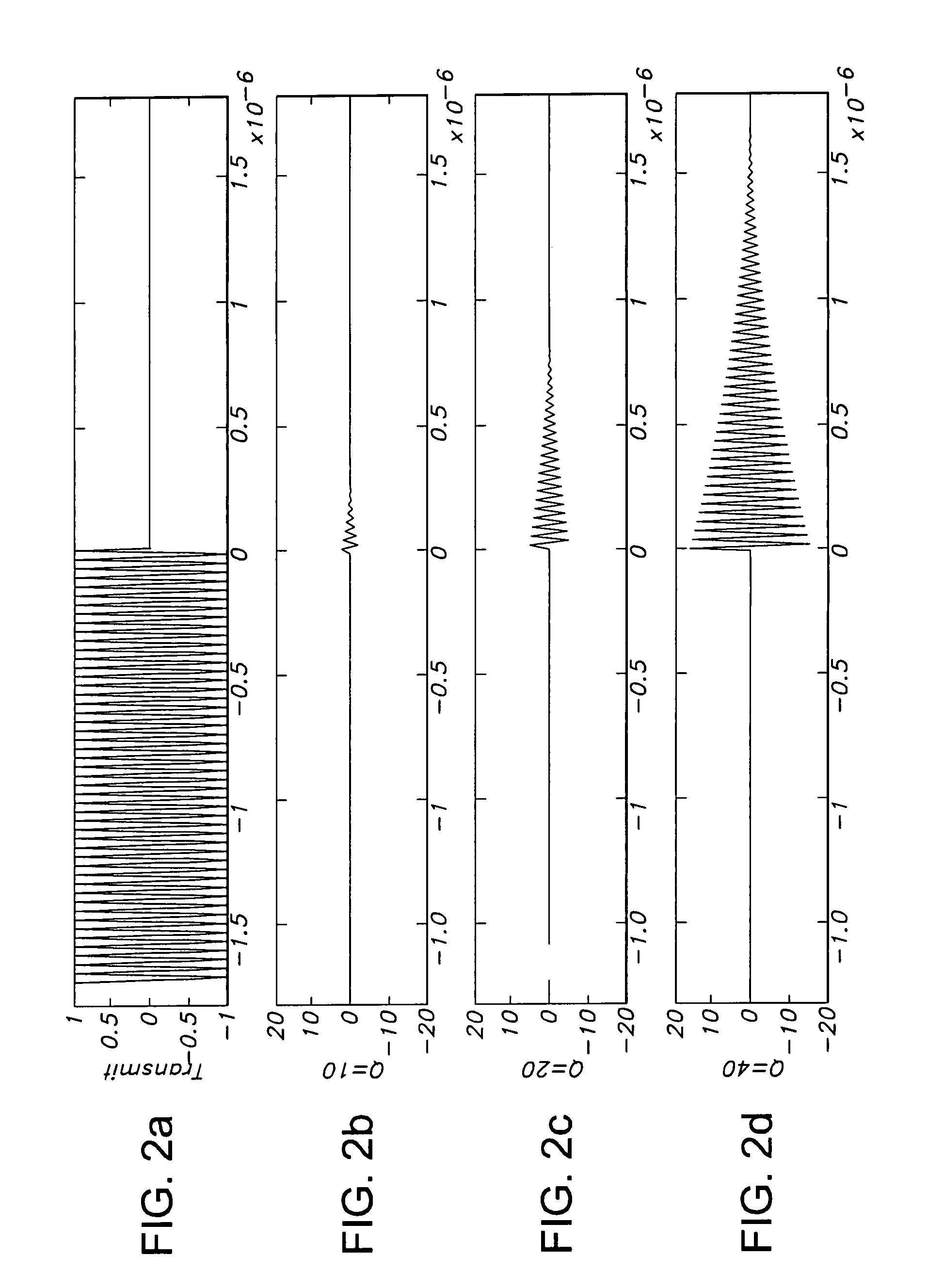Communicating with an implanted wireless sensor
- Summary
- Abstract
- Description
- Claims
- Application Information
AI Technical Summary
Benefits of technology
Problems solved by technology
Method used
Image
Examples
Embodiment Construction
[0028] The present invention is directed towards a system and method for communicating with a wireless sensor. Briefly described, the present invention determines the resonant frequency of the sensor by adjusting the phase and frequency of one or more energizing signals until the frequency of this signal locks to the resonant frequency of the sensor. The frequency of the energizing signal can be adjusted using a group phase delay operation. The system energizes the sensor with a low duty cycle, gated burst of RF energy at a predetermined set of frequencies and a predetermined amplitude. In some embodiments, the set of frequencies includes three different energizing signals at different frequencies which are transmitted separately. The signals induce current in the sensor that can be used to track the resonant frequency of the sensor. The system receives the ring down response of the sensor as sensor signals at three different frequencies and determines the resonant frequency of the ...
PUM
 Login to View More
Login to View More Abstract
Description
Claims
Application Information
 Login to View More
Login to View More - R&D
- Intellectual Property
- Life Sciences
- Materials
- Tech Scout
- Unparalleled Data Quality
- Higher Quality Content
- 60% Fewer Hallucinations
Browse by: Latest US Patents, China's latest patents, Technical Efficacy Thesaurus, Application Domain, Technology Topic, Popular Technical Reports.
© 2025 PatSnap. All rights reserved.Legal|Privacy policy|Modern Slavery Act Transparency Statement|Sitemap|About US| Contact US: help@patsnap.com



